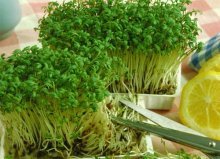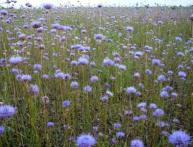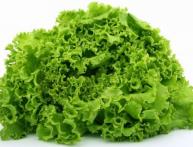Secrets of proper cultivation of watercress
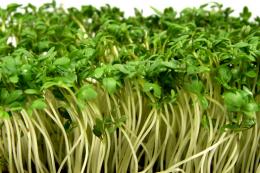
Due to the craze for green plants, new types of salads began to appear on our tables more and more often: lettuce, batavia, romaine, buttery, half-pumped and many others. And caring housewives took a fancy to another, far from new, type of vitamin-rich greens and quickly began growing watercress. Moreover, this can very easily be done right on the windowsill.
Content:
Characteristics and sowing
Watercress (or bedbug) is a fast-growing plant of the cruciferous family. It is known in other cultures as tertizak, cotham, and garden cress.
Lettuce leaves are actively used for culinary purposes and as medicinal raw materials. They contain large quantities of vitamins A, C, K and B1. Due to its low calorie content, salad is often included in therapeutic diets and in diets for weight loss.
The fresh greens of these nutritious leaves can be obtained year-round. If in summer this is possible from the garden bed, then in winter - from the greenhouse.
Moreover, watercress is so undemanding that it will produce a harvest even on sand or even felt. You can generally sow lettuce instead of a compactor, in a space free from the indoor plant, right at its roots.
The soil for sowing watercress in the garden is prepared ahead of time. It is best to do this in the fall:
- remove weeds
- add humus
- dig deep
In spring, the prepared area should be fluffed up with the addition of compost or mineral fertilizers.
Useful tips for growing
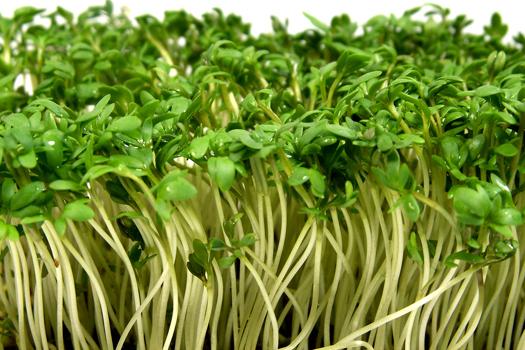
Usually seeds sown in early spring. But this plant can withstand winter sowing in late autumn. You can grow watercress in rows. But it also gives a good harvest when sown in strips or in a continuous bed.
Moreover, you can sow lettuce in several passes: from early spring until the onset of summer heat. It is not advisable to do this in later rows: the plant will begin to shoot arrows, which will worsen its taste. From August you can start sowing again.
One of the main advantages of growing watercress is its very fast growth rate. Literally half a month after sowing, it is already suitable for consumption.
The seeds of this lettuce are relatively large. They need to be evenly distributed over grooves 1 centimeter deep. If in open ground 1 gram of seeds is consumed per 1 m2, then in a greenhouse this norm should be at least doubled.
To get a large rosette of leaves, the distance between two neighboring plants must be at least 5 centimeters, and after diving - at least ten. The soil above the sowing site should be compacted. After 3 days, the first shoots appear.
If you do not adhere to agricultural techniques or simply choose old seeds, you can ruin the entire harvest or not get it at all. After all, the proverb “what goes around comes around” is not just beautiful words.
Growing in different conditions
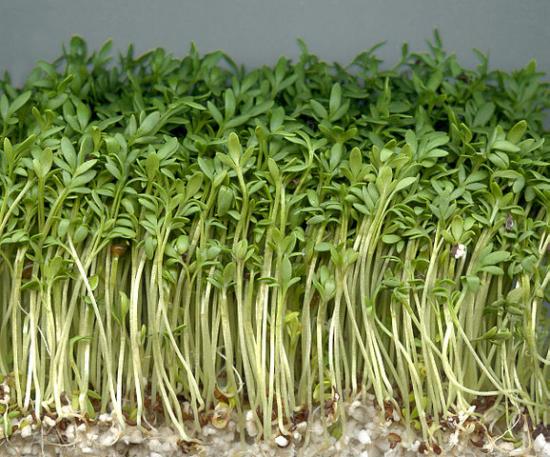
Planting lettuce is just the beginning. Like any green culture it needs abundant regular watering. Otherwise, its leaves become coarser and the plant throws out an arrow.
Watering mode:
- On hot summer days it is necessary to provide daily watering.
- On cloudy days, one moisturizer for three to four days is enough.
- The optimal amount of water is a key point in growing watercress. If this is provided, the plants will not get sick or be affected by pests.
Growing watercress is very easy. It is only important to clear the bed of weeds in time and loosen the soil after abundant watering.
It propagates like any other lettuce - by seeds. And to ensure the constant presence of its greenery on the table, sowing the crop can be done in several passes. In a permanent place, lettuce can be sown on its own, so that after a while it will delight with friendly shoots.
Watercress gives good yields - sometimes 2 kilograms per 1 m2. This partly depends on the varieties, of which there are a lot developed today. But salads with greensleaves will grow faster than purple ones.
Feeding lettuce is a very delicate matter. After all, the period from germination to its consumption is very short. Therefore, it is better to take care of nutritious soil before sowing.
But if this does not work out, then you need to feed the watercress with the utmost care. Fertilizers must be applied in very low concentrations and in small quantities. This will avoid the accumulation of nitrates in the leaves.
Watercress leaves are undemanding to light and even shade-tolerant. Therefore, he will easily take root on the kitchen windowsill even from the north side. To obtain juicy, healthy greens in winter, you will need 2 medium-sized drawers that will fit well on the windowsill and will not spoil the appearance of the kitchen interior. The soil in the boxes can be replaced with substrate or even paper towels.
Sowing must be done sequentially, once every 10 days.This will allow you to cut the crop in one box with scissors while the lettuce is just sprouting in another. Growing watercress is not difficult even for novice gardeners. And then it’s so captivating that it’s impossible to imagine either a garden or a table without its small, graceful leaves!
Useful video about growing a real vitamin bomb at home:
Interesting information about the vegetable garden

